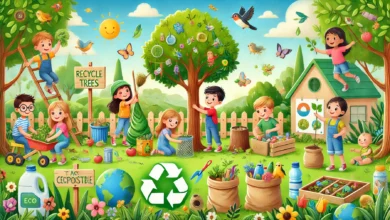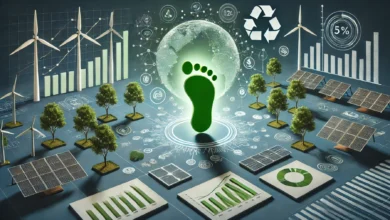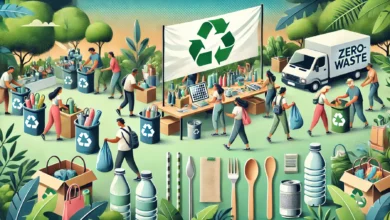Upstream vs Downstream in Procurement and Supply Chain

Supply chain management is more than the movement of materials from A to B. Behind every successful operation, there is a flow design that bifurcates into two distinct portions: the upstream and downstream processes.
Understanding the real difference between upstream and downstream processes can make or break business success – just ask any of the large manufacturers who are struggling today.
Contents
- 1 What does upstream mean in procurement?
- 2 What does downstream mean in procurement?
- 3 Upstream vs Downstream comparison table
- 4 Why is it Important to Industries?
- 5 How Companies Manage Upstream and Downstream Strategies
- 6 Emerging Trends in Upstream and Downstream
- 7 Frequently Asked Questions (FAQ)
- 7.1 What is the main difference between upstream and downstream?
- 7.2 Can a company only concentrate upstream or downstream?
- 7.3 What technologies are used in upstream vs downstream supply chains?
- 7.4 Is downstream supply chain more customer-centric?
- 7.5 Why is it important to balance upstream and downstream strategies?
What does upstream mean in procurement?
Upstream refers to the activities related to procuring raw materials and raw material parts before the manufacturing process occurs, so from a supply chain perspective, upstream includes all of the activities from sourcing raw materials to beginning the manufacturing process.
Depending upon the upstream requirement, this can be viewed as a collecting step, i.e., the step when the organization acquires/procures the raw materials needed to create its final products.
Upstream Activities
- Identifying Suppliers
- Evaluating Suppliers
- Negotiating Contracts and Terms
- Purchasing Raw Materials
- Logistics of Inbound Raw Materials
For example, let’s consider an electric vehicle manufacturer that we all know, such as Tesla. Prior to becoming a manufacturer of lithium and cobalt-based batteries, Tesla would need to secure a supply agreement upstream for the batteries it was manufacturing. Without a successful upstream management plan in place, Tesla would, quite literally, stop everything in its tracks.
Upstream Procurement Challenges
- Reliability of suppliers and the quality of raw materials
- Price volatility of raw materials
- Geopolitical conditions – stability of supply chains
- Lead times for critical components
Many organizations are beginning to invest in supplier relationship management systems with early warning indicators to become more effective in managing their upstream supply processes.
What does downstream mean in procurement?
When a product is manufactured, the attention turns downstream; with the necessary actions to get this finished goods to a customer. Everything downstream is behind production.
Some examples of key downstream functions are:
- Distribution and ‘pulling’ transportation of finished goods
- Warehousing and management of inventory
- Retail relationships and point of sale operations
- Customer relationships and after sale experiences
Now think of a company like Amazon; once product is ready in the fulfilment centre, the downstream function is engaged and subsequent activities continue through packing and shipping, tracking and on to delivering to your doorstep.
Some key challenges in the downstream supply chain are:
- Variability in consumer demand
- Last mile issues in delivery
- Reverse logistics (returns and repairs)
- Fast delivery and low-price expectations
Organizations ‘known’ for strong downstream supply chains are typically taking the financial lead in warehouse solutions and technology in T& supply chain, but are doing so in these upstream functions to be positioned to meet the market demands and the growing expectations of consumers.
Upstream vs Downstream comparison table
| Aspect | Upstream Activities | Downstream Activities |
|---|---|---|
| Description | Provisions of purchasing raw materials and inputs | Delivering final product to consumer |
| Key Focus | Relationships with suppliers, sourcing inputs, procuring inputs | Customer satisfaction and distribution |
| Key Players | Vendors and Manufacturers | Distributors, retailers, end users |
| Key Risks | Interrupted Supply, Shortage of Materials | Risk of demand variability and failure in managing distribution |
| Technical Uses | ERP systems, vendor inventory management tools | CRM systems, Logistics optimization systems |
Why is it Important to Industries?
Manufacturing = Upstream is getting your parts into the plan and downstream is getting your products sent to your distributors.
Retail = Distribution is about fulfilling all of the supply chain rotations and ensuring that your customers experience the best you can offer.
Energy Sector: The supply chain is divided into upstream, or the extraction of oil, and downstream, which represents the distribution of fuel to gasoline stations. This split defines the entire energy sector.
You can see this same split in supply chains and industries like wind energy, where sourcing of upstream wind turbine parts is just as in energy as downstream wind energy suppling energy to the grid. (See also Related: How to Become a Wind Turbine Technician).
How Companies Manage Upstream and Downstream Strategies
Successful companies do not just think about one side.
They formulate an integrated strategy that connects superior upstream sourcing with customer fulfillment of downstream success.
Some strategies include:
- Develop sustainable supplier networks that prevent bottlenecks upstream
- Adaptable distribution processes that respond to unpredictable demand downstream
- Predictive analytics to realize the forecasting gap between supply and demand
The goal? To develop a synchronized, agile supply chain that is capable of pivoting quickly — when a manufacturer who provides a component closes down or customer orders expand exponentially overnight.
Emerging Trends in Upstream and Downstream
Sustainability Pressures
Companies are doing more work auditing their suppliers and distributors on social, environmental, and ethical standards.
Supply Chain Digitalization
The use of AI and blockchain is becoming more adopted in automating upstream procurement and downstream fulfillment.
Nearshoring and Reshoring
Companies are moving their upstream sourcing and downstream distribution closer to home to mitigate global impacts.
Frequently Asked Questions (FAQ)
What is the main difference between upstream and downstream?
Upstream is a specific part of the entire supply chain that deals with the sourcing and supply of raw materials, while downstream is about distribution of product supply to a customer.
Can a company only concentrate upstream or downstream?
Not really! Resilient supply chains effectively figure out how to manage both sides seamlessly to meet business planning and customer needs.
What technologies are used in upstream vs downstream supply chains?
Upstream tend to use ERP and sourcing platforms, whereas downstream typically relies on CRM systems, logistics software, and warehouse automations.
Is downstream supply chain more customer-centric?
Yes! The downstream supply chain generally aims to meet customer demands for fast, reliable, and transparent delivery.
Why is it important to balance upstream and downstream strategies?
Inefficiencies on either side of supply chain operations can erode the entire supply chain – synchronized management of upstream as well as downstream develops consistency that contributes towards business development.



